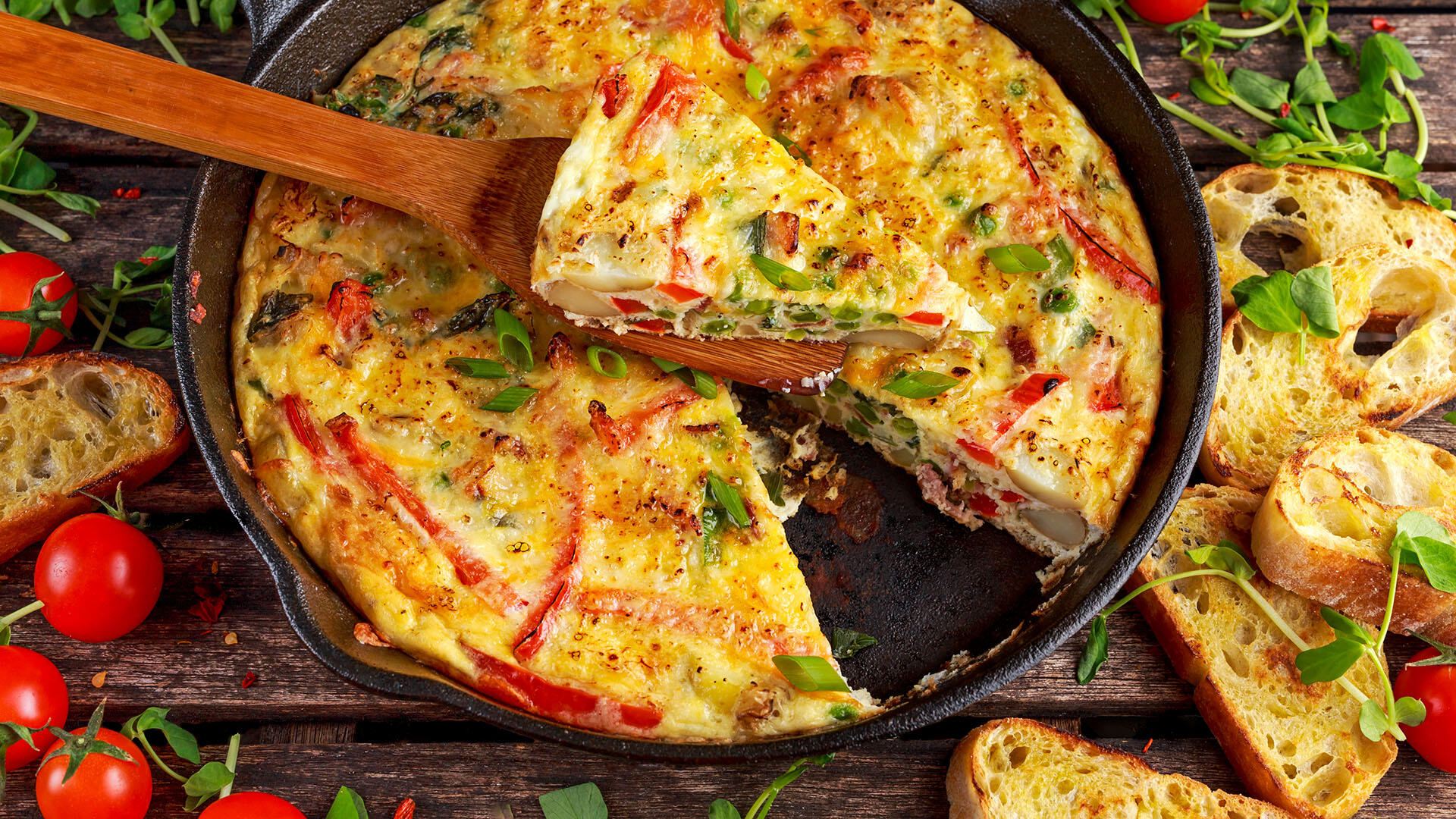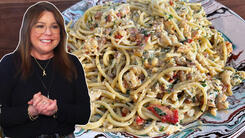Rach hits the grocery store aisle to share her shopping tips for making the perfect dinner on a chilly February night: [Soba Bowls!](/food/recipes/soba-bowls/)
**Avoid health & beauty items.** "In grocery stores, you should be getting your best buys on food, not necessarily on health and beauty," Rachael says. "They're counting on the convenience factor for you to overpay for those types of items. You're going to find better prices on your health and beauty items by going to beauty supply stores or drug stores." Rachael adds that one exception would be on laundry detergent, and that stores will cycle through the lowest price available for that item once every 12 weeks, in which case you should stock up and buy three-month's worth.
**Beware of endcap product placement.** Rachael says that even though you may find some bargains on the store's endcaps (the sections at the end of aisles), be on the lookout for higher-priced items that share the same shelf. "If it's the store's brand or an insanely low-priced brand, go ahead and stock up on that," she suggests, "but beware; if there's a low-priced pasta, the store might place a high-priced pasta sauce next to it, figuring they'll trick you into buying it for the convenience."
**Soba substitute.** "If your store doesn't carry these Japanese-style buckwheat noddles, a great substitute is a whole wheat spaghetti or a thin spaghetti. This bumps up the protein and the fiber every time you make spaghetti or noodles or pasta for your kids. It's a great easy way to improve their general nutrition."
**Look high and low.** "When you're shopping for staple items from the shelves," Rachael says, "always look high and low. What's in the middle is often paid for by slotting fees - they're spending money [to have the items placed there] to get you to buy their product, and you may be missing out on smaller companies that are offering products that may be more nutritious and less expensive."
**Unit price vs. ticketed price.** This is one of Rachael's biggest tips: Never compare the ticketed prices of two products, but rather compare the unit prices, the smaller number to the left of the ticketed price. The unit price is the indicator of which item has the best pricing and the better value for your dollar.
**Deceptive packaging.** Some companies may reconfigure the packaging of their foods to give the impression that you're getting more product than you actually are; be sure to compare the weights of products when choosing the best value, don't go by the size of the box or container alone.
**Dry off your produce.** Many grocery stores have "misters" in the produce department to keep the items looking fresh all day, but since water can add weight, make sure you shake off any excess water from your produce before placing them on the scale.
**Use paper bags for mushrooms.** "Moisture is not a friend of the mushroom," Rachael warns. "If you run them under the water they'll turn rubbery and take longer to brown in the pan. The same applies in grocery stores. Ask for paper bags for your mushrooms because plastic bags will keep the condensation inside and turn them rubbery and tough."
**"Loss leaders."** Every week, stores carry "loss leaders," items that they sell at a loss to themselves in order to get you in the store. Rachael suggests taking advantage of these kinds of deals in produce or meat even if you were only planning on cooking for a few people; free and save them for when you do need them. Before freezing meat or chicken, pat it dry to cut down on freezer burn, and bring the meat back to room temperature before cooking for juicier meat.
**The best dairy dates.** "When they stock the dairy department, whether you need milk or eggs or whatever, they put the freshest items in the back because they load it from the back of the cooler. Move a few aside and grab items from the back because they will have the longest usage time."
**Chicken breast vs. cutlets.** "When your store is offering a great price on chicken breasts or cutlets, do the math - for cutlets, all they did was take two seconds to take the breast and cut it across. You're paying for that labor, so really think that one out."
**Inspect wrapped meats.** If you see puddles of blood in plastic wrapped meat, that means it's been out there longer. You want your meat packaging to appear nice and clear with no residual juices pooled up. If you don't see that, ask for the product that's on special but that you'd like it wrapped fresh.
**Don't avoid clearance racks.** While most people steer clear of these displays because they think it's full of stale or expired food, Rachael says that you can find great deals. "There's a variety of reasons why a store has to put items over on a clearance table," she explains. "Perhaps the company they bought it from discontinued the style but there's nothing wrong with it, like with mops or brooms. Lots of times they buy a fancy gourmet item and it just doesn't move, but it...


Rachael Hits the Grocery Aisles

Q&A with Organizational Pro Peter Walsh + Dermatologist Shares A…

Actor Hank Azaria + Freezer Meals + Artichokes 2 Ways with Rach

See Inside Barbara Corcoran's Stunning NY Apartment + It's Steak…

How to Make Chicken and Lobster Piccata | Richard Blais

Donnie Wahlberg Spills Details About NKOTB's First Ever Conventi…

Donnie Wahlberg + Jenny McCarthy Say Rach Is Such a "Joy" + Look…

The Best Moments From 17 Seasons of the Show Will Make You Laugh…

How to Make Crabby Carbonara | Rachael Ray

Rach Chats "Firsts" In Flashback From Our First Episode Ever In …

How to Make Apple-Cider Braised Pork Chop Sandwiches with Onion …

Rach's Chef Pals Say Goodbye to Show in Surprise Video Message

How to Make Sesame Cookies | Buddy Valastro

How to Make Tortilla with Potatoes, Piquillo Peppers and Mancheg…

How to Make Shrimp Burgers | Jacques Pepin

How to Make Spanakopipasta | Rachael Ray

Andrew McCarthy Chokes Up Discussing Emotional Trip to Spain wit…

Celebrity Guests Send Farewell Messages After 17 Seasons of the …

Celebrity Guests Send Farewell Messages After 17 Seasons of the …

Andrew McCarthy Teases Upcoming "Brat Pack" Reunion Special











